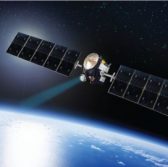 Northrop Grumman’s solar electric ion propulsion-powered Dawn spacecraft has reached the end of its 11-year mission to two planet-like bodies that drift between Mars and Jupiter.
Northrop Grumman’s solar electric ion propulsion-powered Dawn spacecraft has reached the end of its 11-year mission to two planet-like bodies that drift between Mars and Jupiter.
The company said Thursday the spacecraft used up its altitude-control fuel after completing its mission of collecting data about Vesta and Ceres, which are two of the largest objects in the asteroid belt.
Dawn arrived in Vesta first in 2011 then in Ceres in 2015, collecting more than 90K images about the two celestial bodies throughout its mission and helping to provide photos clearer than those previously taken by scientists using the Hubble Space Telescope.
The spacecraft traveled over 4.2B miles or around 168K trips around the equator.
Frank Culbertson, president of Northrop’s space systems group, said Dawn helped give information about the solar system during its infancy, as well as validated the performance of the company’s LEOStar spacecraft platform.
Dawn will remain in Ceres’ orbit to for 20 years or more to prevent the spacecraft from crashing.
Northrop developed Dawn at its satellite manufacturing facility in Dulles, Va., in partnership with NASA‘s Jet Propulsion Laboratory.




